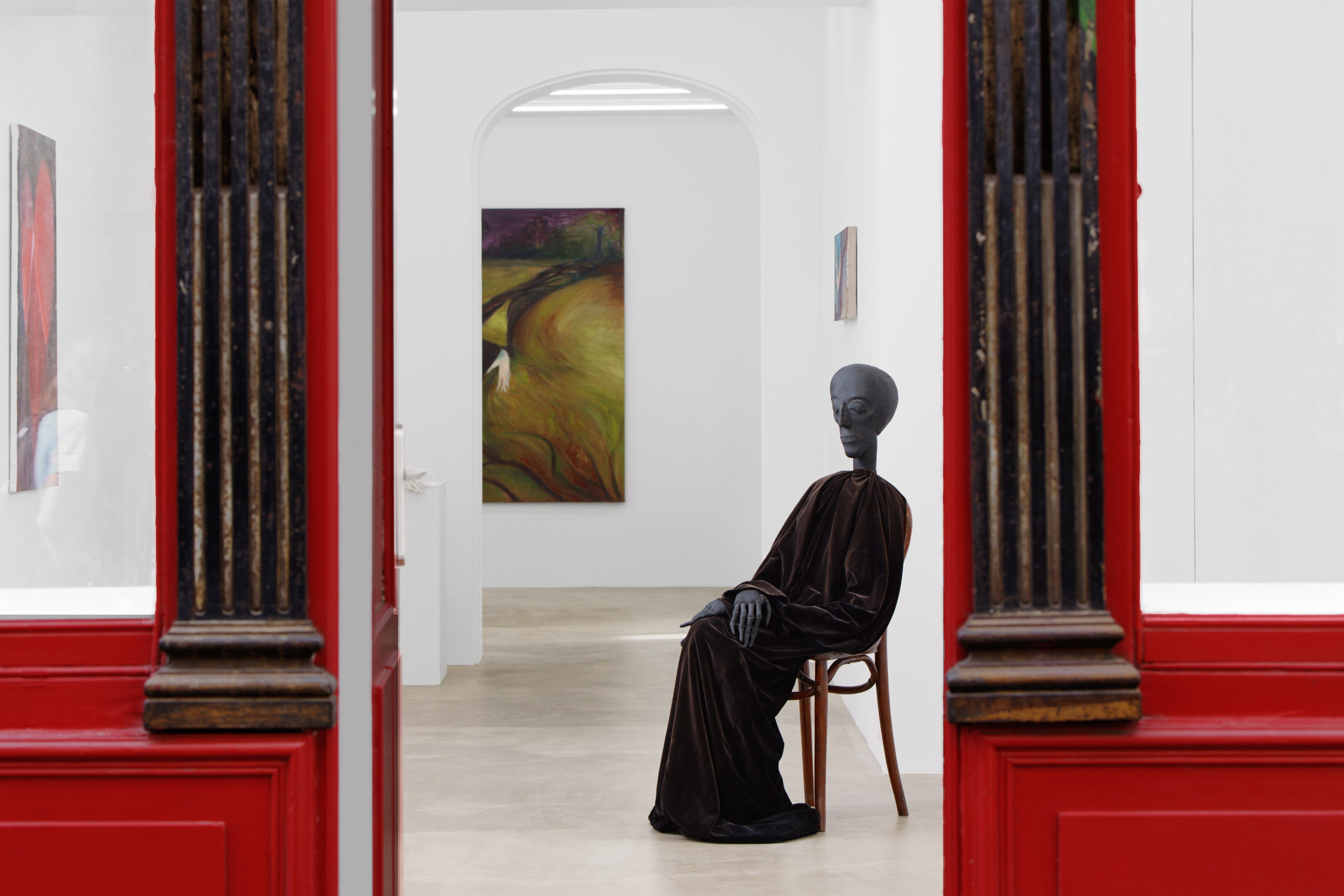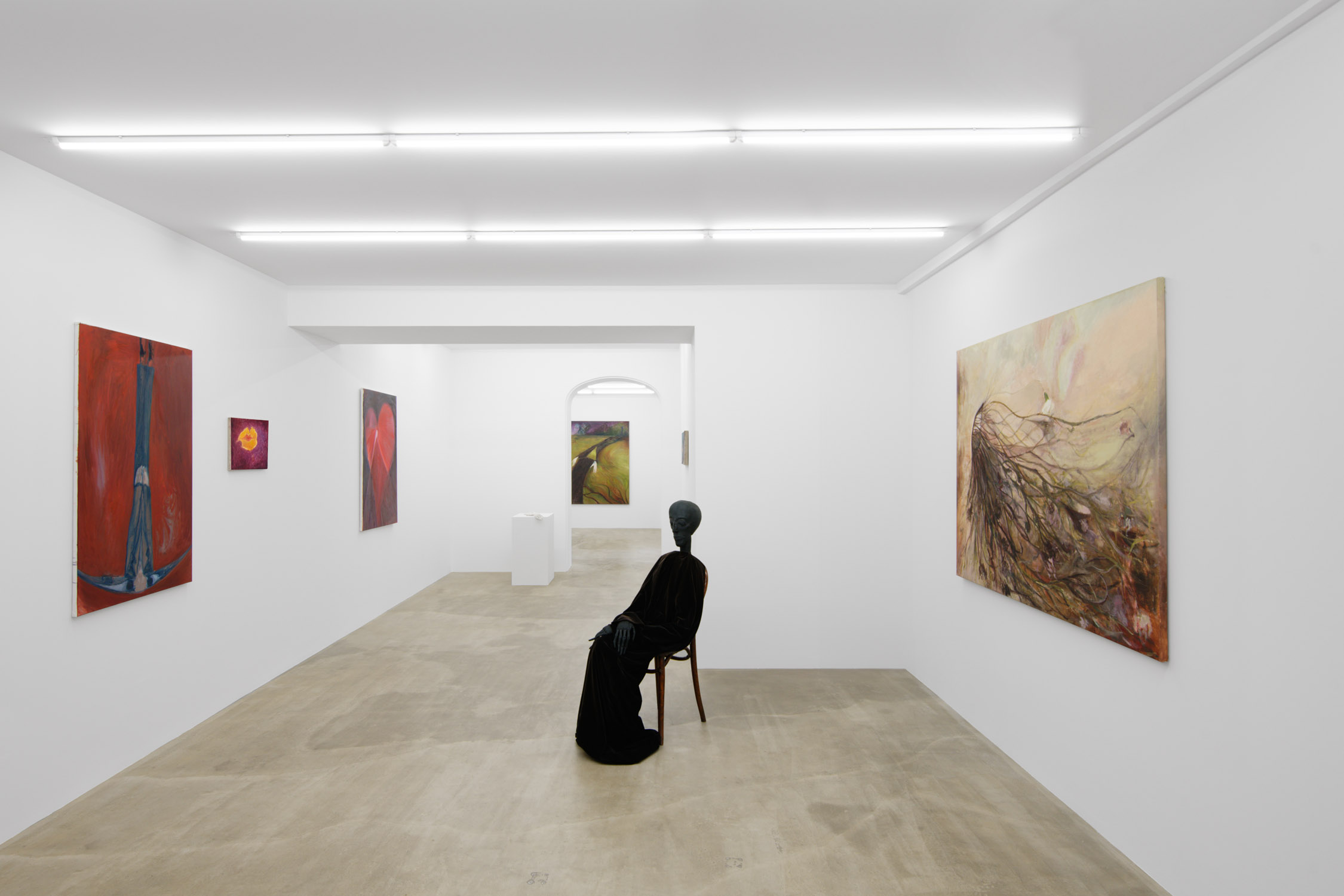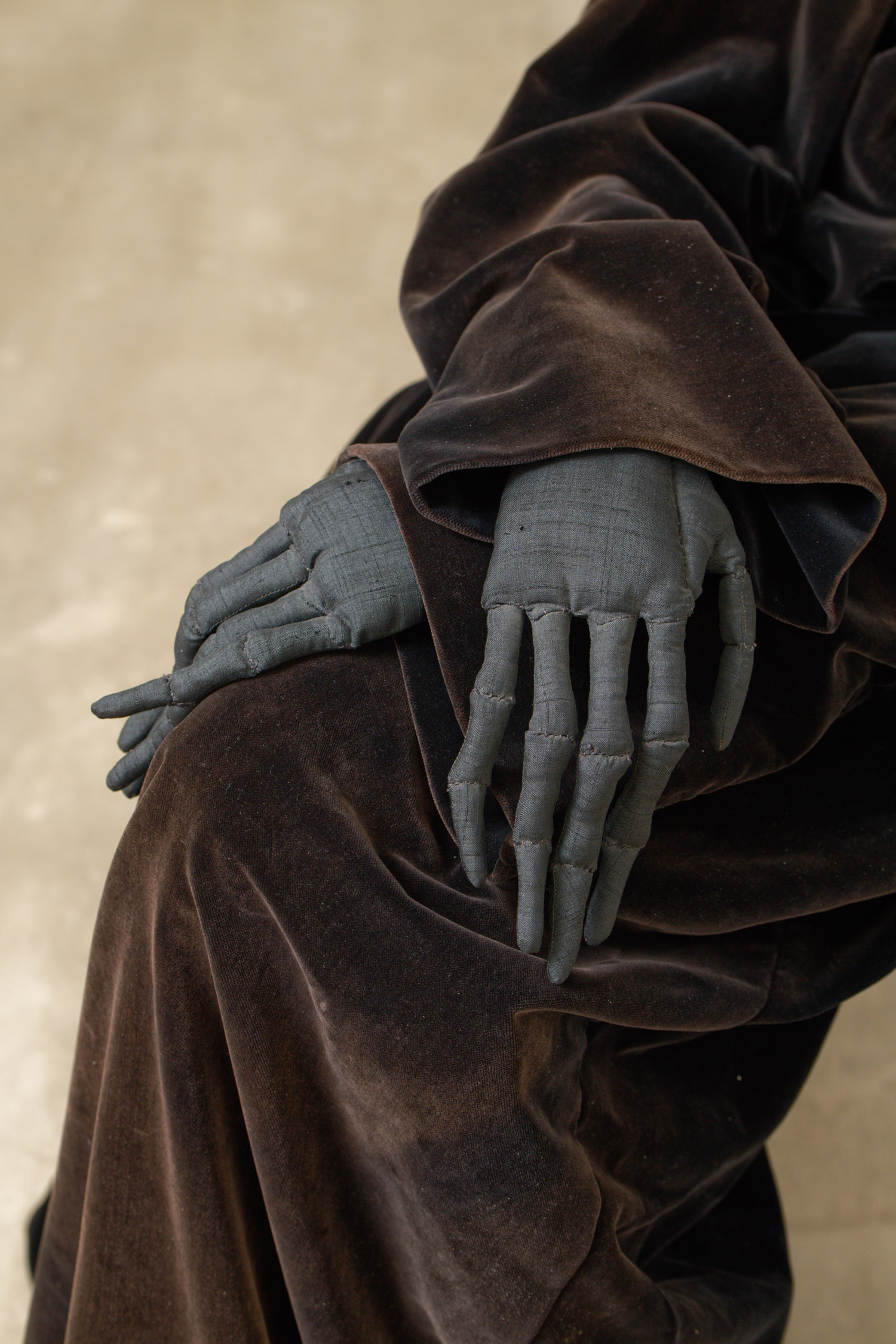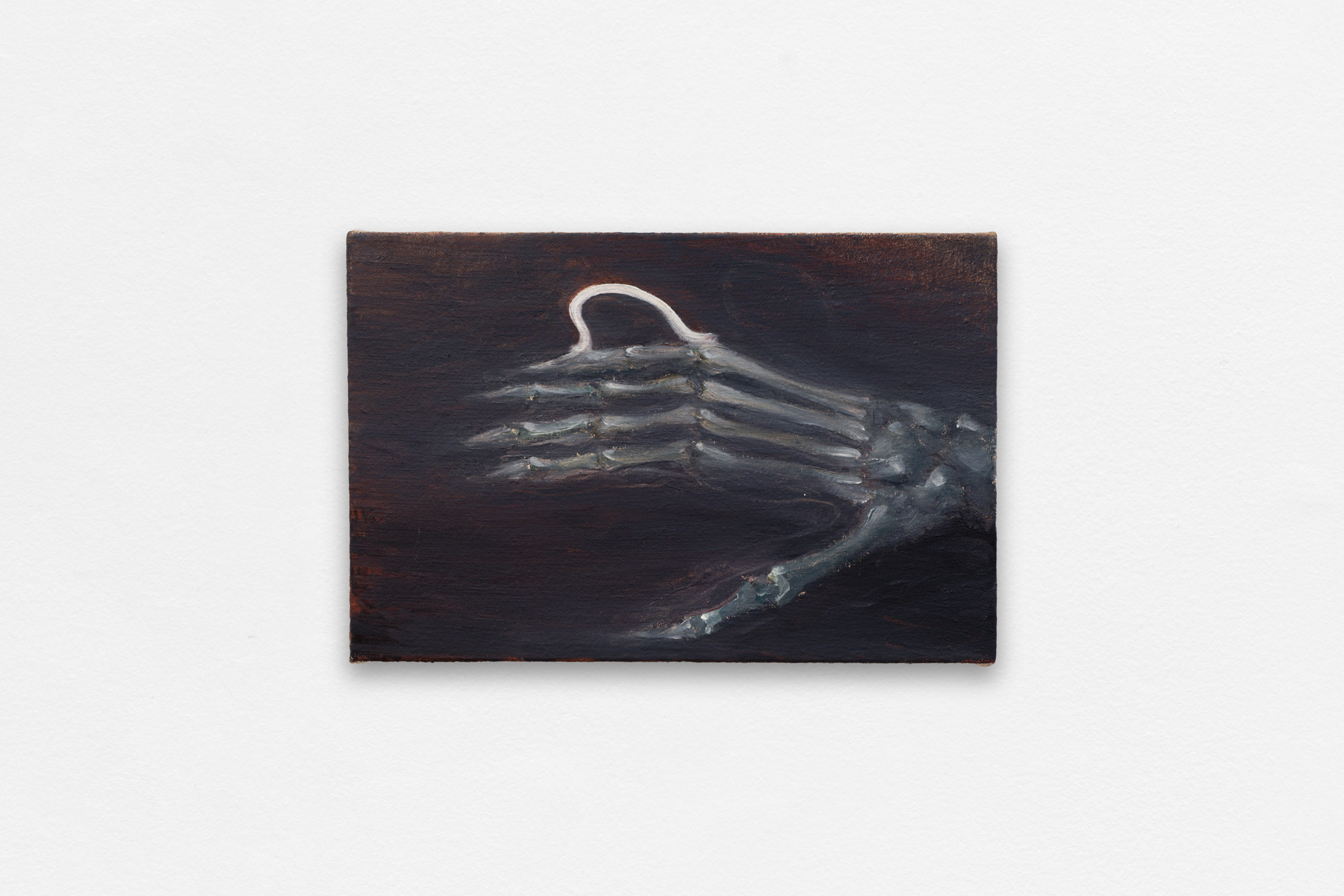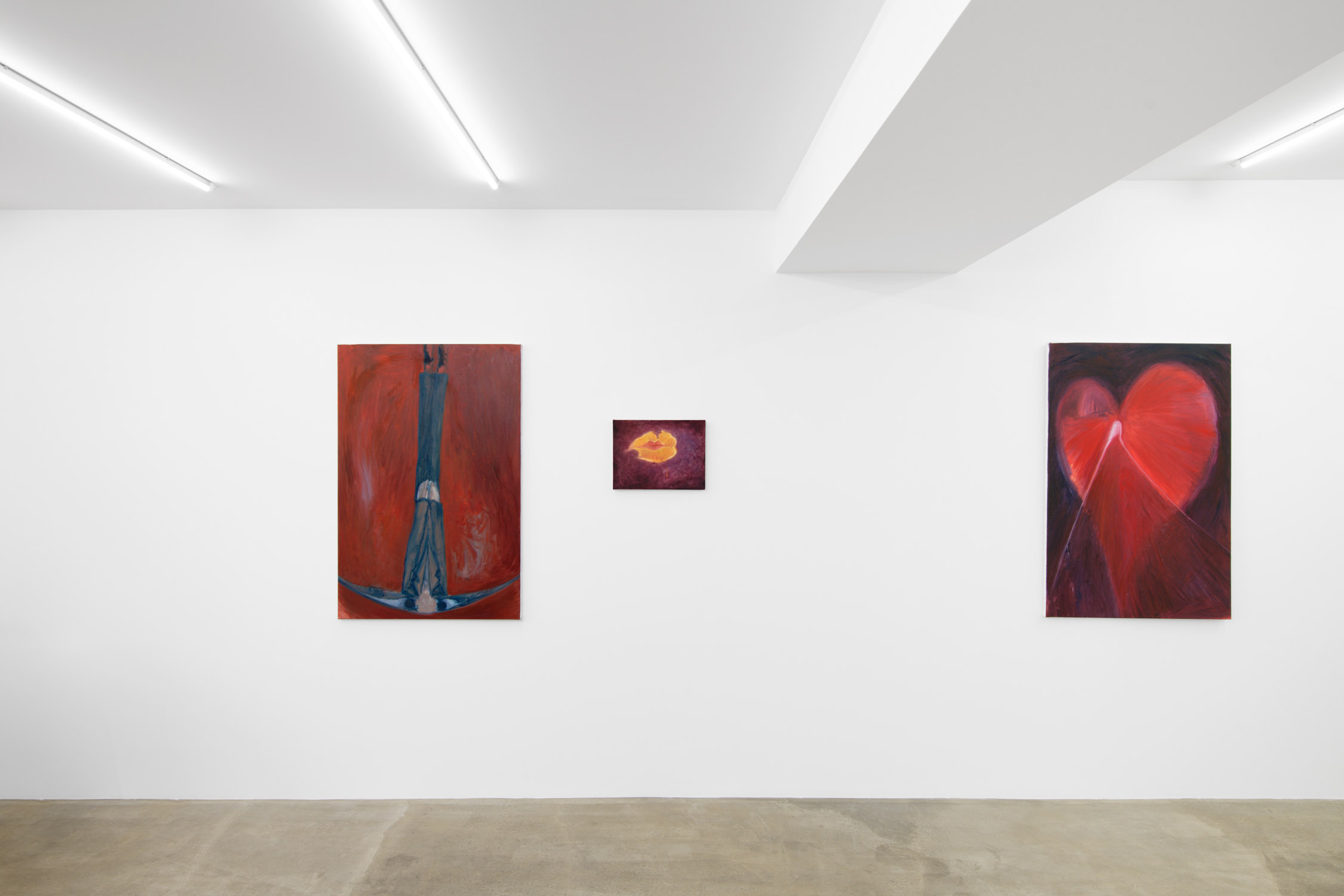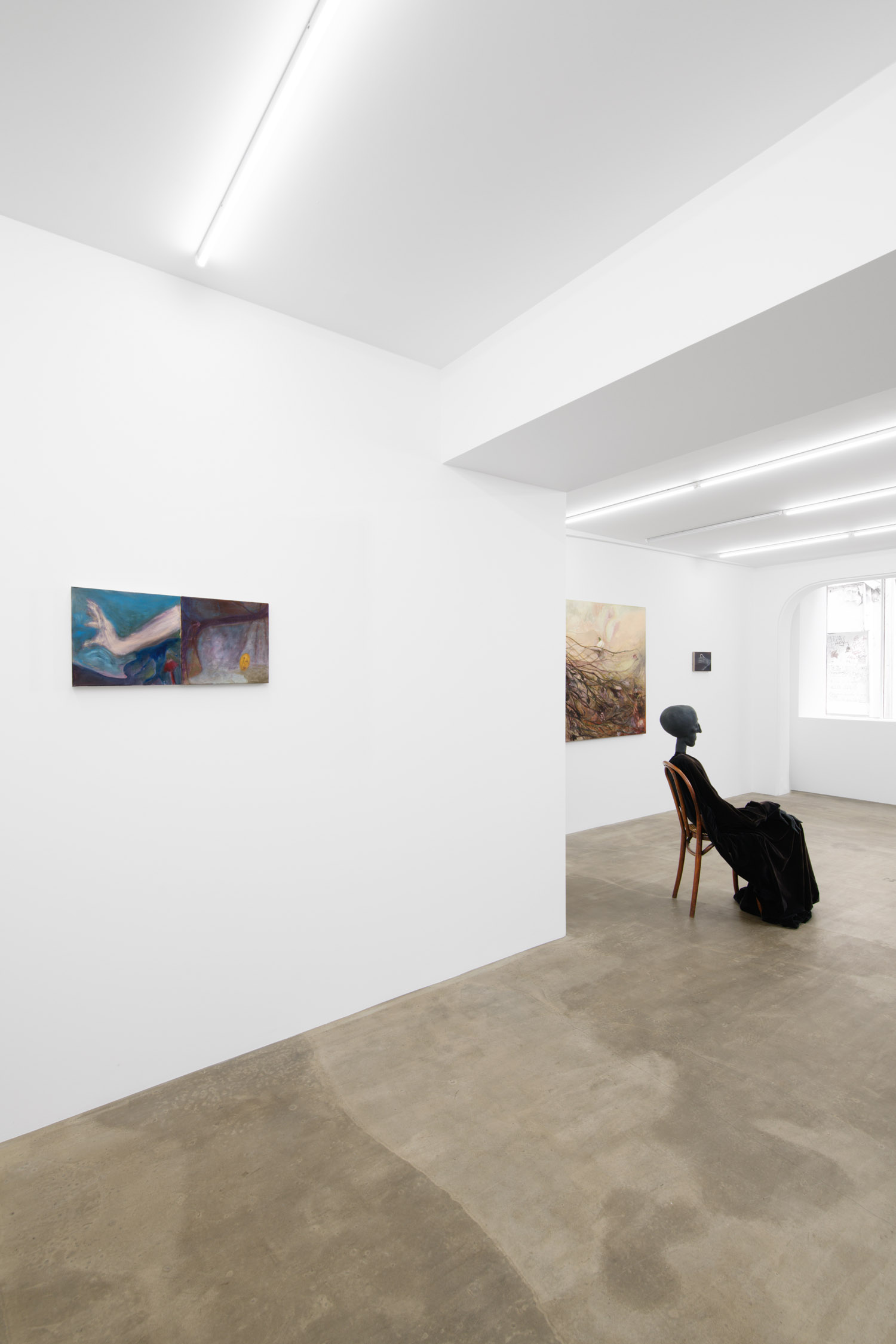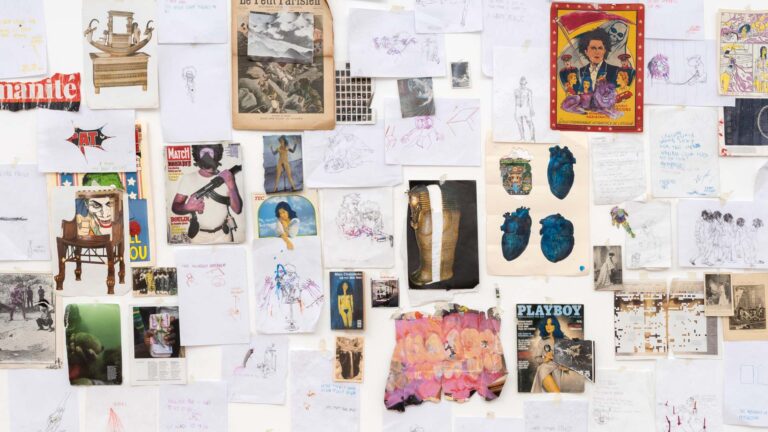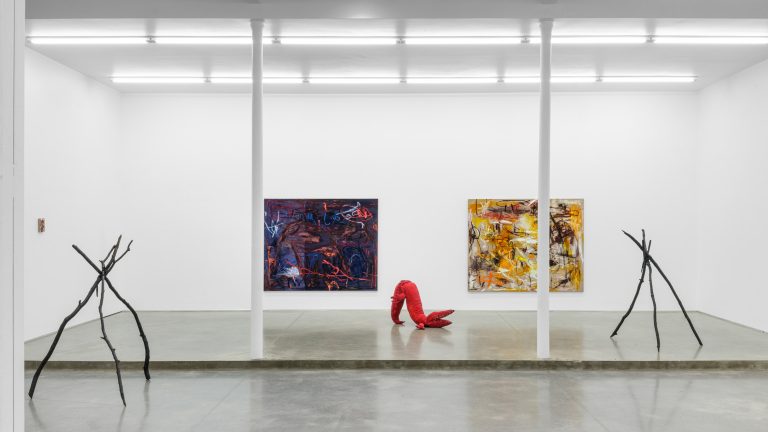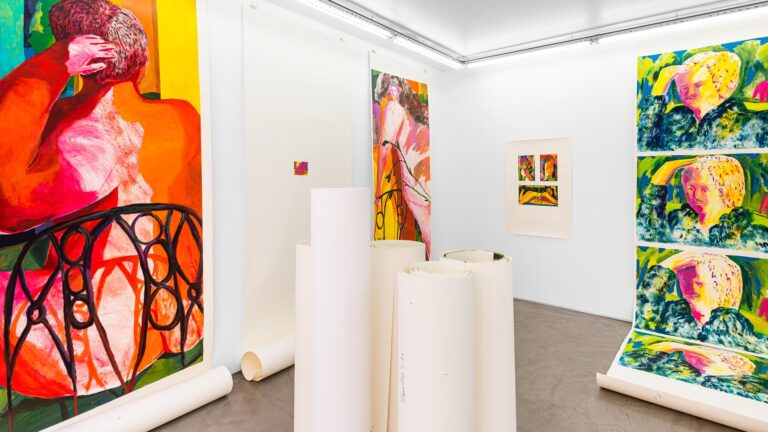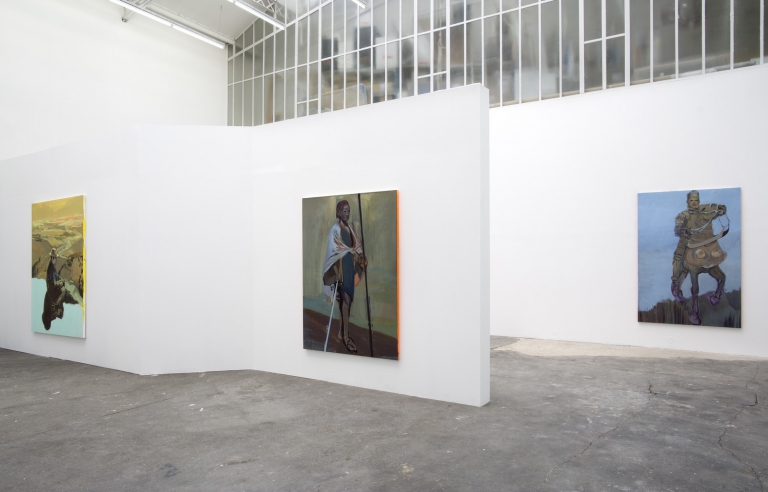From September 5th to October 5th, 2024, Sans titre presents Tombé.e.s vers le haut, a dialogue between the historical Swiss artist Eva Aeppli (1925 – 2015) and the Chinese painter Zhiliang Jin (1995). The exhibition is part of the Paris Surrealist itinerary, organized by the Comité Professionnel des Galeries d’art, the Association Atelier André Breton and the Centre Pompidou around the Surrealism exhibition at the Centre Pompidou (until January 13, 2025).
In my dream, we were walking
through a lonely landscape. The color
of the path was the color of your thoughts. I
asked you a question, but you did not answer. You
were looking inward. You seemed
fearful and confused.
The twilight was advancing. You were walking now
with your eyes closed. I took your hand to
guide you through the darkness.
At last, much later, the darkness lifted and a
pale gray glow filled the sky. I turned,
but you were gone.
The path had become very narrow and had taken on the
color of a painful dream. It led across a
desolate land.
Slowly I followed the path, knowing that I would
never return.
Eva Aeppli, “Le Sentier”, in Le Mot Tombé Du Ciel, Éditions du Centre Culturel Suisse, Paris, 1989. English translation appears as “The Path” in: Eva Aeppli, Drawings, oil paintings, sculpture, 1959 – 1994, Garden of the Zodiac, Omaha, Nebraska, USA. Translator unknown.
Eva Aeppli endeavored throughout her career to show the varieties of human physiognomy: whether in her practice of charcoal drawing, her series of bronze heads, her first collages composed of wool and fabrics, or even her puppets without strings, which she considered self-portraits. Aeppli learned to fabricate dolls at a very young age during her schooling at the Steiner school. It was at the Goetheanum that she also discovered the eurythmy shows and the figurines of Edith Maryon and Hilde Langen. Later, through the medium of sculpture, Aeppli sought to exorcise the human cruelty that had marked her so much as a child. Terrorized by the horrors of the Second World War and Nazi propaganda, her work took a therapeutic and cathartic turn through the development of vulnerable silhouettes with severe and bruised faces. From this flowed a significant series of human-scale characters and puppets, including the two sculptures presented at Sans titre, Xenobia (1972) and Frieda (1965).
Aeppli’s works – each named for the first name of a loved one – have a character that is both ghostly and skeletal, burlesque and martyred. They enact a movement of introspective abandonment and personal spoliation. They bear witness to the outrages of the 20th century to show the coexistence of life and death in carnivalesque and expressive ways – amusing, at times, but covered in scars and wounds.
Like Renaissance painters or the Surrealists, Eva Aeppli took an interest in astrology as a mental and existential reference. It allowed her to delve back into her entire journey since birth and to analyze the matrix of her thinking, which navigated between higher forces and the hazards of destiny. For Aeppli, we are intermediary beings, “acrobats between heaven and earth.(1)” Her journey was strewn with shattering, division, ruptures, and solitude; but also paradoxically with a true desire for illuminating transgression.
Zhiliang Jin’s pictorial work – presented for the first time at Sans titre – captures a sensation of transience in an often blurred and undefined atmosphere. Observations and reveries contingent upon ordinary things and objects are composed in a strange and latent state. They meet, intertwine, blend, and transform. The anthropomorphic character of Jin’s objects, drawn straight from the artists dreams, echoes the apprehension of nightmare and trauma that we find in the work of Aeppli.
In Zhiliang Jin’s work, we find ordinary life transformed into a game, a graphic arena where modern devices and the human body engage in a strange whirlwind. Utensils, organs, and the human shape embrace each other, creating an incredibly incongruous fusion, as if a whole new creature were growing in an imaginary space. The human, in turn, with his own intuition, much as in Aeppli’s bodies, is transformed into a variety of twisted and grotesque instruments. The confrontation between these two elements forms a resonance with a great sense of humor, together conveying a yearning for the essence of nature.
(1) In 1987, Eva Aeppli invited 100 friends and acquaintances to join the “Universal Movement of Acrobats Between Heaven and Earth” by sending them a mat she had made, accompanied by the following letter: « This flowery mat allows you to become an acrobat between heaven and earth. This tool will help you climb higher into the sky and bring back the celestial food of which earthlings are so in need. It will also protect you in all that is essential. There are 100 of these mats. You are receiving one because you have the possibility of using it. But if you do not want to make the effort, you can return it or send it to someone else. » (Letter written by Samuel Mercer in Caubert, reproduced in the eleventh Book of Life.)
–
Eva Aeppli (1925 – 2015) was an artist born in Zofingen, Switzerland. She has lived in France since the early 1950s. Her studio on the Impasse Ronsin in Paris – across from the workshop of the momentous sculptor Constantin Brancusi – put her in close contact with the avant-garde art scene of her time (Niki de Saint Phalle, Jean Tinguely, Daniel Spoerri). Eva Aeppli always disregarded the artistic trends and fashions and autodidactically creating an independent oeuvre of timeless validity. She began as a painter and, in the 1960s, turned to making figures out of silk, velvet, and cotton textiles, which she sewed in a technique she developed herself. Her pictorial world circled the fundamental human themes, the world of the emotions, and death.
Aeppli’s recent retrospective “Le Musée Sentimental” at Centre Pompidou Metz (2022) linked her practice with artworks by important artists such as Louise Bourgeois, Emma Kunz, Mike Kelley, Sarah Lucas, Annette Messager and Gisèle Vienne. The last major Surrealist gallery, Alexandre Iolas, dedicated a solo exhibition of her in 1975 in its Parisian space. Throughout her life, Aeppli collaborated with Samy Kinge, an expert on the work of Victor Brauner.
Aeppli’s works are present in the collections of Centre Pompidou – Musée National d’Art Moderne, Paris; Tinguely Museum, Basel; Moderna Museet, Stockholm; Kunstmuseum Solothurn; CNAP – Centre National des Arts Plastiques, Paris, amongst others.
Zhiliang Jin (b. 1995, Wenzhou) lives and works in Guangzhou, China. He graduated in 2022 from the Royal College of Art in London and in 2018 from The Glasgow School of Art.
The artist took part in exhibitions at TENET, London (2024); Gene Gallery, Shanghai (2023); Pina, Vienna (2022); Royal College of Art, London (2022); Tree Art Museum, Beijing (2021); Fresh Milk, Barbados (2019); The Glasgow School of Art, Glasgow (2018); The Pipe Factory, Glasgow; The Concept Space, London (2017); 12 Star Gallery in Europe House, London (2017).
